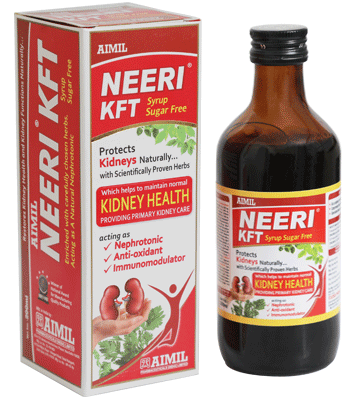ABC’s of Particulate matter
Smog is a type of air pollutant; the word "smog" is a combination of smoke and fog. Classic smog results from large amounts of coal burning in an area and is caused by a mixture of smoke and sulfur dioxide.
According to the aerodynamic diameter, 2 categories of particles are regulated by the Environmental Protection Agency: coarse particulate matter (PM10) with an aerodynamic diameter of <10 μm, and fine particulate matter (PM2.5) with an aerodynamic diameter of <2.5 μm. Particles <10 μm in diameter can penetrate the nasal cavity to reach the alveoli, thus reaching the lungs and escaping into the blood stream. The smaller a particle is, the longer it will stay in the deeper sites of the lungs; furthermore, particles <1 μm act like gas molecules and reach the circulatory system.
Recent epidemiologic studies have shown that PM2.5 affected the decline of renal function and increased membranous nephropathy, meaning that the kidney is potentially susceptible to PM2.5.
Cause of concern
- Fine particles can damage the kidneys in the same way as they damage organs such as the heart and lungs.
- The findings showed that air pollution increased the chances of developing membranous nephropathy -- an immune disorder of the kidneys -- that can lead to kidney failure.
- National cohort of United States veterans, observed a linear relationship between PM2.5 concentration and risk of incidence of Chronic Kidney Disease and progression to End Stage Renal Disease.
What happens when we are exposed to deep exhaust inhalation for long term?
- Elevated levels of fine particulate matter (PM) of <2.5µm in aerodynamic diameter is associated with increased risk of death, reduced life expectancy, increased risk of cardiovascular disease.
- As far as kidneys are concern:
Exposure to deep exhaust leads to disturbances in
- Renal hemodynamics,
- Oxidative stress,
- Inflammation,
- Lowering the kidney function is directly proportional to size of particulate matter
- DNA damage in renal tissue
- Enhancement of chronic renal injury
Consideration:
All findings paints a grim image of how living in polluted areas can affect all aspect of human health. The irony with Kidney disease is that it often has no symptoms or remains unnoticed till late stages. Its concern for the population having kidney disease or on the edge of having it or suffering with precipitating diseases like diabetes, hypertension or the earner of diseases “OBESITY” should save their heavy medical expenses and most precious life with timely awaking.
Ray of hope: Initiative taken by AIMIL Pharmaceuticals
HERBS in NEERI KFT can protect from the ailment linked to air pollution to susceptible group of patients.
How it works?
Neeri KFT provides a rich concentration of anti-oxidant, anti-inflammatory phytoconstituents, a probable mechanism for maintain kidney functions.
Herbs contributing towards beneficial effects:
- Boerhavia diffusa (Punarnava) & Tinospora cordifolia (giloe) works as rasayana for the body as it rejuvenates the body by cleansing it with its unique property of flushing out the mala (toxins) from the dhatus (body tissues), balances the doshas and opening and nourishing the various body channels so that each and every tissue and cell of the body gets proper nutrition and keeps the body fit and fine.
- The effects of pollutants/ toxic metals on the kidney have been known for many years. Nephrotoxicity may occur as a result of occupational or therapeutic exposure to these metals. Heavy metals tend to accumulate in kidneys where they may produce a broad spectrum of morphological and functional effects. Rheum emodi (Revand chini) provide pronounced nephroprotective activities very comprehensively through multiple mechanism against various factors deleterious for kidneys viz. pollutants, toxic metals, potentially nephrotoxic drug molecules.
- Polyphenolic compounds of Moringa oleifera (sigru) have all been shown to attenuate the renal dysfunction, improve the renal architecture and increase the antioxidant enzyme activity, decrease lipid peroxidation and reactive oxygen species in kidney dysfunction. Phytochemical constituents in Moringa oleifera (sigru) could contribute to its antioxidant activity.
- Phenolic substances such as flavonoids, coumarins, cinnamic acid and caffeic acids are known to have antioxidant properties, which may play an important role in protecting cells and any organ from oxidative degeneration. Coriandrum sativum (dhania) suppresses the deposition of toxicant metals by chelation mechanism. It was shown that coriander extracts have phenolic compounds and flavonoids, suggesting that these compounds contribute to the anti-oxidative activity.
- Hemidesmus indicus (Anantamool) is amahara (removes ama [undigested food]), raktaprasadana (purifies the blood), mutra-janana and mutravirajaniya (diuretic), stanyashodaka (act as purifying), dahaprashamana (pacifies burning sensations), and sothahara (anti-inflammatory).
- Cichorium intybus (Kasni) is a very good alkaliser & also gives strength to the kidneys. Benefits in acute & chronic kidney dysfunctions.
Conclusion:
- Neeri KFT is a blend of, scientifically proven herbs with pronounced therapeutic activity and safety, helps maintain normal kidney functions by improving the functional capacity of nephrons.
- Neeri KFT provides a high strength of antioxidant protection to the kidneys.
- Neeri KFT helps in significantly protecting healthy kidneys from possible damage from potentially nephrotoxic drug molecules besides heavy metals and pollutants.


